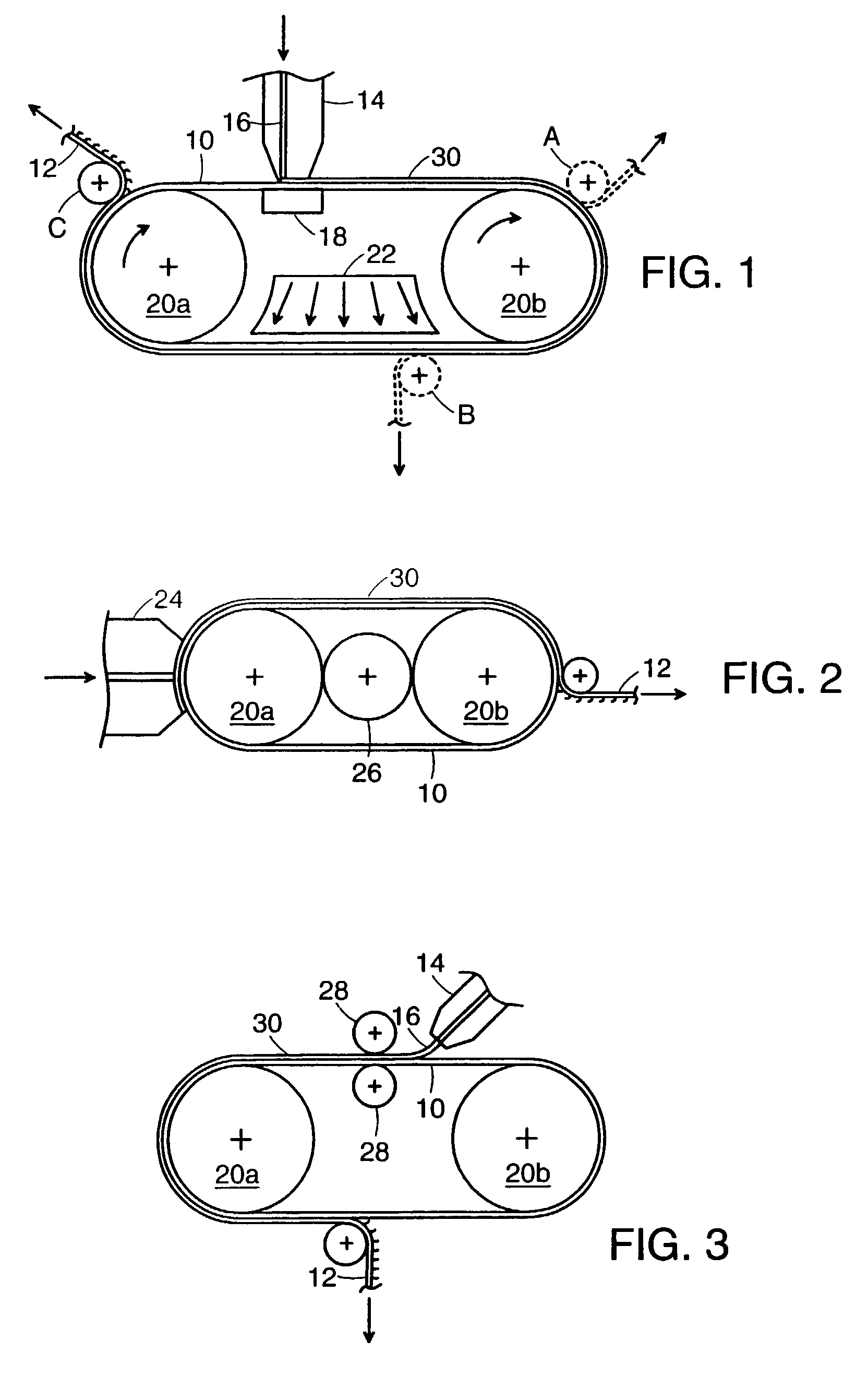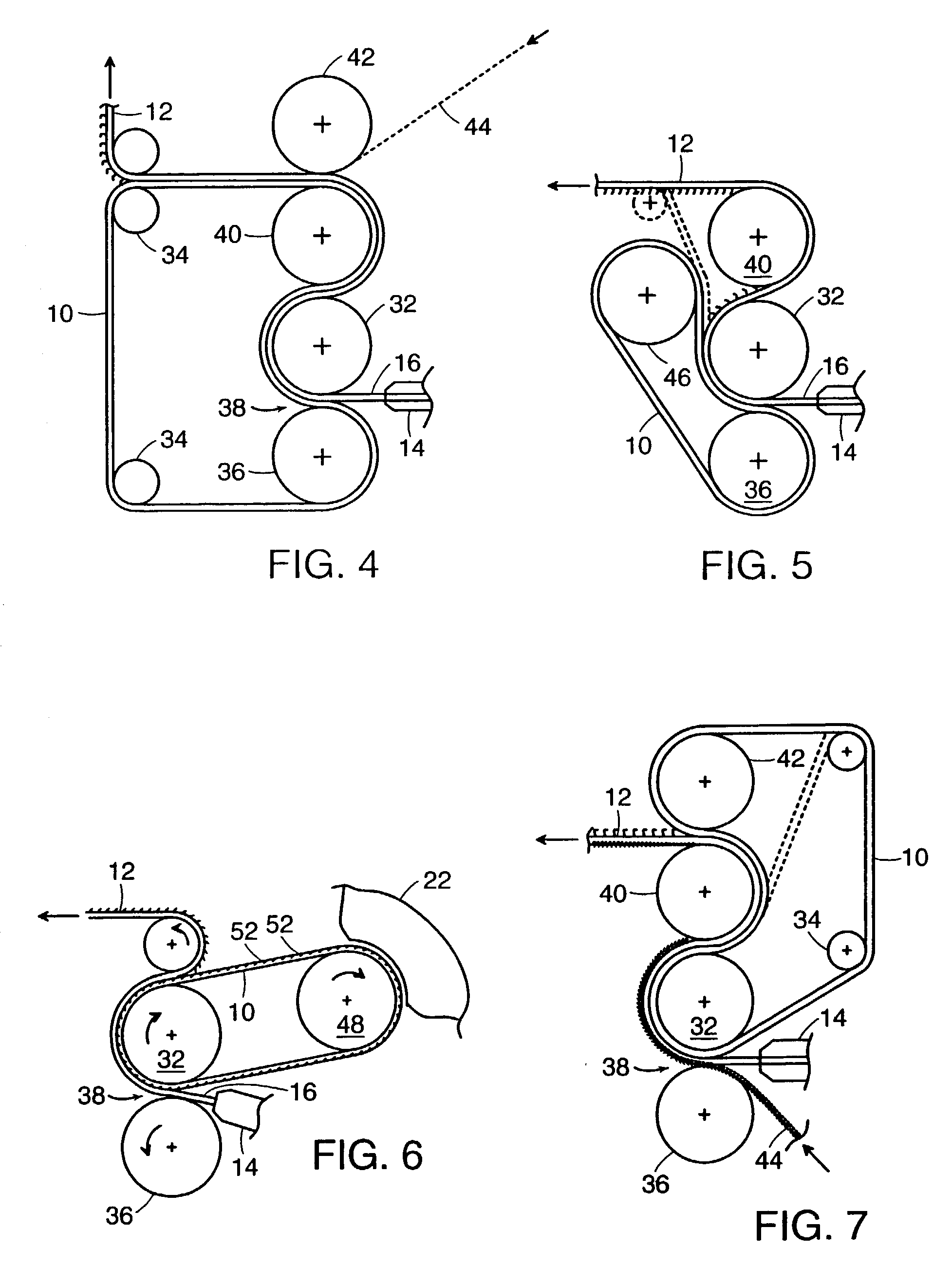Continuous molding of fastener products
- Summary
- Abstract
- Description
- Claims
- Application Information
AI Technical Summary
Benefits of technology
Problems solved by technology
Method used
Image
Examples
Embodiment Construction
[0113]Each of the embodiments shown in FIGS. 1–7 have a recirculating mold belt 10 for continuously molding fastener products 12. The belts and rollers are not drawn to scale, and the thickness of the belt has been exaggerated for purposes of illustration.
[0114]In each of the illustrated arrangements, the product 12 formed is a sheet-form touch fastener product having a continuous, broad base of resin from which an entire two-dimensional array of miniature fastener elements extend, as shown in FIG. 26. The resin base of the fastener product, typically only about 0.002 to 0.020 inches thick and anywhere from one to 12 inches or more in width, is formed on one broad surface of belt 10 while the fastener elements are molded in individual mold cavities extending into the belt from the surface on which the base is formed. The arrangement and density of the cavities will vary between embodiments, but is generally the case that there will be between 50 and 2500 cavities per square inch of ...
PUM
| Property | Measurement | Unit |
|---|---|---|
| Length | aaaaa | aaaaa |
| Length | aaaaa | aaaaa |
| Thickness | aaaaa | aaaaa |
Abstract
Description
Claims
Application Information
 Login to View More
Login to View More - R&D
- Intellectual Property
- Life Sciences
- Materials
- Tech Scout
- Unparalleled Data Quality
- Higher Quality Content
- 60% Fewer Hallucinations
Browse by: Latest US Patents, China's latest patents, Technical Efficacy Thesaurus, Application Domain, Technology Topic, Popular Technical Reports.
© 2025 PatSnap. All rights reserved.Legal|Privacy policy|Modern Slavery Act Transparency Statement|Sitemap|About US| Contact US: help@patsnap.com



